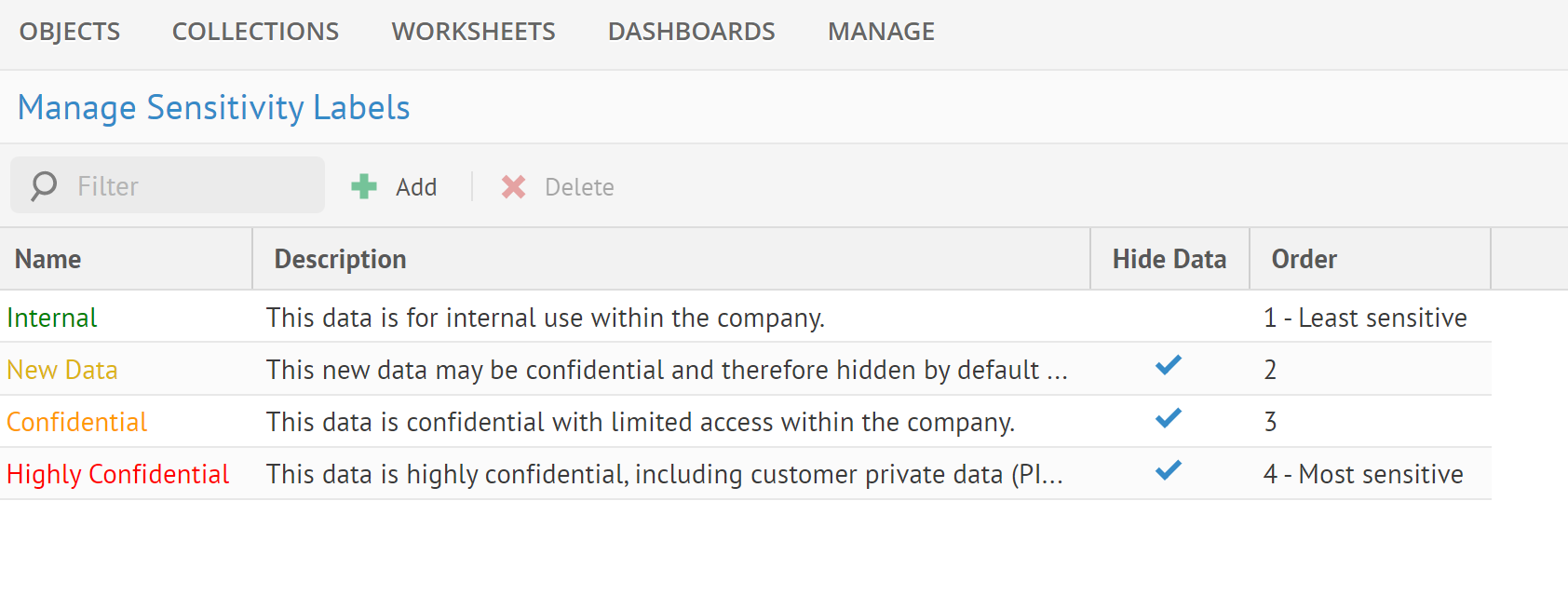Finding and hiding sensitive data with a sensitivity label
Assign the highly confidential sensitivity label to the email_address column in the anonymized_orders table. If you have already found and hidden the sensitive data automatically with a data classification, no need to follow those steps.
Before you begin
-
You have been assigned an object role with the Data Management capability.
- You have been assigned an object role with the Data Classification Editing capability.
About this task






